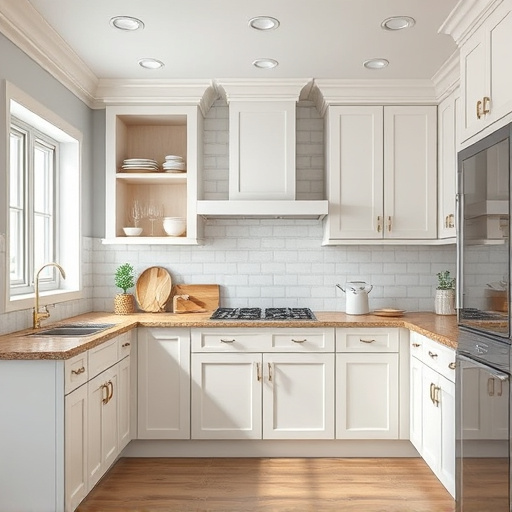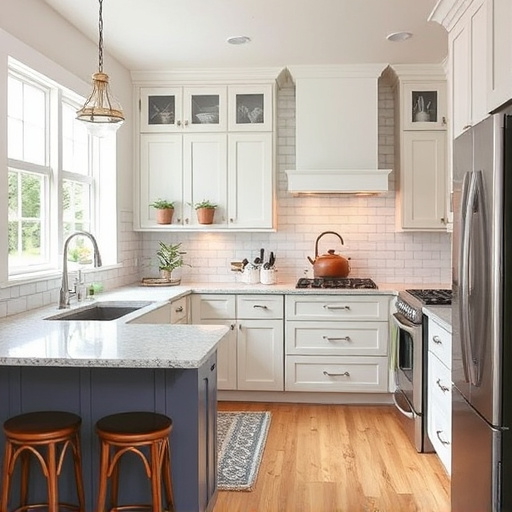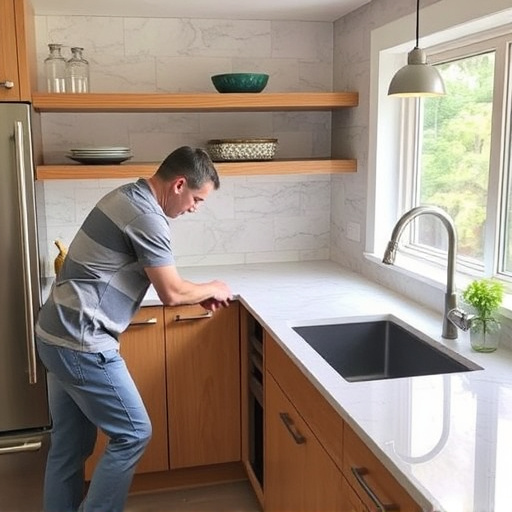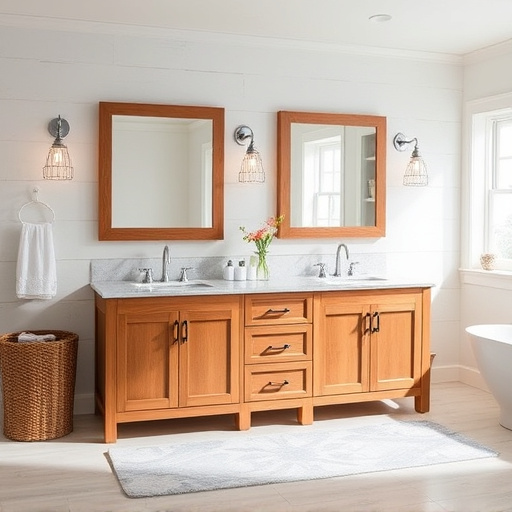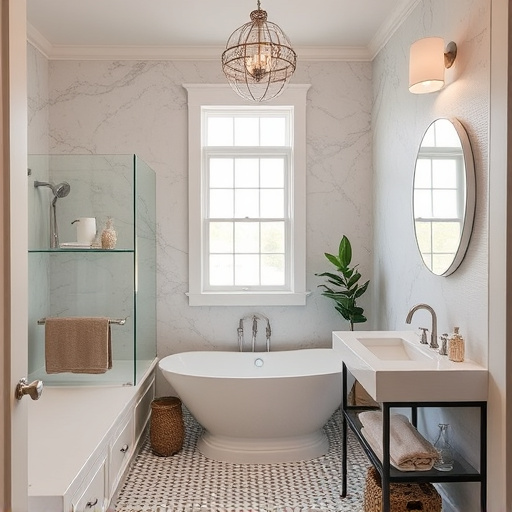Before replacing flooring, assess room needs: traffic patterns, damage, aesthetics. Choose durable materials for high-traffic areas, softer options for low-use spaces. Align selection with home style and lifestyle. Plan meticulously, clear space, protect walls, organize utilities. Match design and color to existing decor for harmonious look.
Preparing your home for a flooring replacement job is a significant step towards enhancing its aesthetic appeal and functionality. This comprehensive guide walks you through the essential aspects, from assessing your home’s flooring needs to choosing the right solution. We’ll outline crucial planning and preparation steps, ensuring a seamless transition. By the end, you’ll be equipped with the knowledge to make informed decisions, turning your flooring replacement project into a successful transformation.
- Assessing Your Home's Flooring Needs
- Planning and Preparation Steps
- Choosing the Right Flooring Solution
Assessing Your Home's Flooring Needs
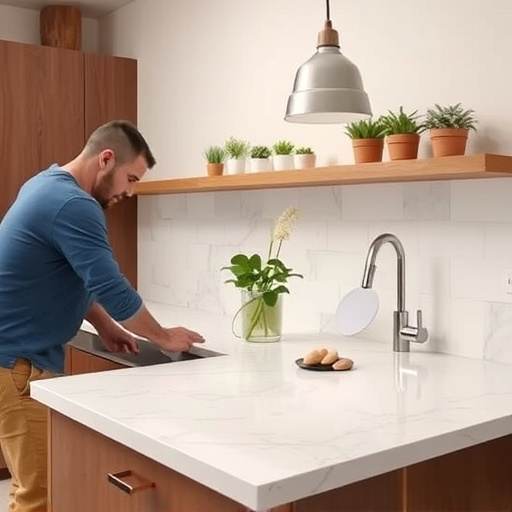
Before diving into a flooring replacement project, it’s crucial to assess your home’s unique needs. Start by evaluating each room separately, considering factors like traffic patterns, existing damage, and individual aesthetic preferences. High-traffic areas like kitchens and hallways may require more durable and water-resistant materials compared to low-use spaces like bedrooms.
Additionally, think about the overall style of your home and how new flooring can complement or enhance it. A successful flooring replacement involves balancing function and form, ensuring that your choice aligns with both the practical needs of each room and the desired interior painting and home remodeling outcome.
Planning and Preparation Steps
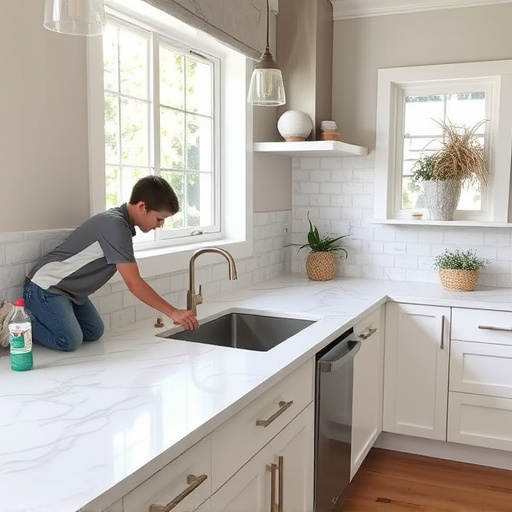
Before starting any flooring replacement project, whether it’s for a whole house remodel or specific kitchen renovations, meticulous planning and preparation are key to ensuring a smooth process. Begin by assessing your functional spaces and creating a detailed plan. Measure each room, taking note of door frames, windows, and any architectural features that might impact floor layout. This step is crucial in choosing the right flooring type for each area, considering factors like traffic flow, moisture levels, and desired aesthetics.
Next, clear out the space you intend to renovate. Remove all furniture, appliances, and decorations, as these will hinder access during installation. Protect nearby walls and fixtures by covering them with drop cloths or plastic sheets. Organize a schedule for utility disconnections if necessary, especially if your flooring replacement involves removing carpeting or hardwood floors. Efficient planning in these initial stages can greatly impact the overall success and timeliness of your flooring replacement project.
Choosing the Right Flooring Solution
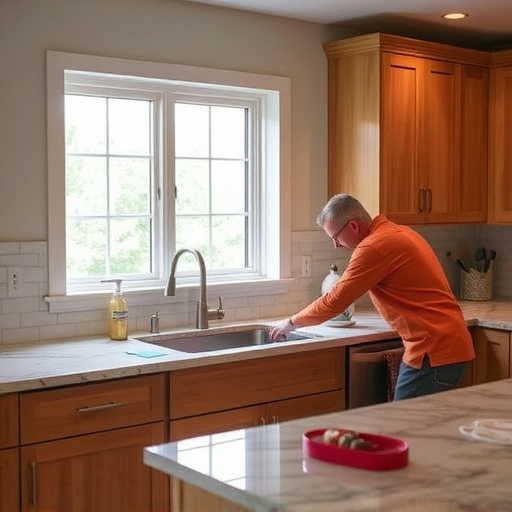
When considering a flooring replacement project, it’s essential to choose a flooring solution that aligns with your lifestyle and enhances the aesthetics of your home. Start by evaluating the purpose of the space – is it a high-traffic area like a living room or hallway, or perhaps a more intimate setting such as a bedroom? Different floors cater to different needs; for instance, durable materials like hardwood or tile are ideal for functional spaces like kitchens and baths that endure constant use. On the other hand, carpet offers warmth and comfort, making it suitable for bedrooms and living rooms where coziness is paramount during home remodeling.
Consider also the design and color palette you envision. Modern floors can range from sleek vinyl tiles to luxurious bamboo, each offering unique styles and textures. Lighter shades can make spaces appear larger, while darker tones add depth and drama. When selecting a flooring solution, ensure it complements existing decor and creates a harmonious look throughout your home, enhancing the overall appeal of your newly remodeled spaces.
When preparing your home for a flooring replacement job, careful assessment of your needs, thorough planning, and thoughtful selection of the right flooring solution are key. By following these steps, you’ll ensure a smooth transition that enhances your living space. Remember, a successful flooring replacement not only updates your home’s aesthetics but also increases its value. So, get ready to transform your floors and embrace the new look and feel of your revitalized living environment.



